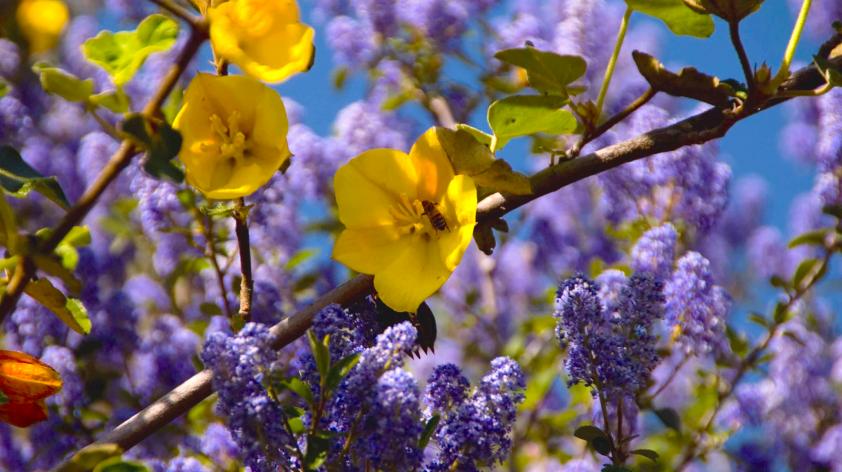
Reviving seeds for our future
It’s one thing to make a seed collection, dry it, and freeze it, but quite another to thaw it, germinate it, and propagate it.
The value of our seed collections lies in our ability to use them. When I look at all the seed collections that we’ve made in the past, and think about those we’ll make in the future, I’m both proud and optimistic, but the reality is they will not live forever. If we are unable to germinate, grow, and use them for conservation actions, then they are little more than frozen plant tissue.
We perform a germination test on every seed collection before it’s dried and frozen for long-term storage. We call this initial test the baseline test, and it serves several purposes.
First and foremost, we want to know that the seed is viable (alive). There’s no point in expending time and space resources for dead seed. We also gather information on the percentage of seeds in the collection that germinate, and the time it takes those seeds to germinate.
Both the germination percentage and the time to germination are expected to decline over time in the freezer as the seed’s metabolism slows, they go deeply dormant, and inevitably some seeds die. In collecting this data, we can re-test frozen collections after a number of years and track the decline in viability, helping us determine when we should revive the seed for research or restoration before it is not useful.
Germination tests also give us an opportunity to experimentally research the best method for breaking the seed’s dormancy. Seeds have many adaptations that prevent them from immediately germinating in the wild, allowing them to wait until the best conditions are present.
For example, in our region seeds tend to ripen in summer, but if they were to germinate right away, seedlings would be exposed to the hottest and driest conditions. Instead they go dormant, waiting for the right conditions to trigger germination, usually water and temperature cues that occur in winter and spring.
Artificially breaking seed dormancy requires us to understand something of the seed’s ecology, and can include treating the seeds with acid to mimic passing through a digestive system, fire or smoke water, cold temperatures, or many others.
This summer I began germination tests for two different seed collections from the species Fremontodendron mexicanum, Mexican flannelbush. This federally endangered species is known from just 3 populations in the United States, and all wild individuals are growing within roughly 11 square miles of fire prone habitat. The species is a tree-like shrub that grows in rocky washes, and it has spectacular, large, yellow flowers that produce seedpods full of hard-coated, black seeds.
I began our standard baseline test in June 2018, and after 4 months, 2% of the test seeds germinated. We knew that the seeds were likely viable because we had dissected a sampling, but it was obvious that they needed something to trigger their germination. We decided to perform a couple different treatments to see if we could break the seed’s dormancy.
We decided to try two different treatments that would mimic conditions the seeds might experience in the wild. Rains wash the seeds down canyon bottoms, and they might be tumbled and battered through sand and among rocks. They might also be fire adapted, with heat triggering germination.
Using 220-grit sandpaper, I individually sanded half of the seeds until I could just begin to see through the dark seed coat to the light colored endosperm. They were then imbibed in water for 24 hours. The other half of the seeds were placed in water at 200F and allowed to imbibe for 24 hours as the water cooled.
After 4 weeks the sanded seeds had a germination percentage of 98%, while the hot water treated seeds were at 96%.
Both treatments allowed for water to more easily penetrate the seed coat, leading to swelling and the eventual emergence of the radicle (root) and cotyledons (leaves). Sanding individual seeds was much more time consuming than simply dumping them into hot water, so hot water treatment seems to be the logical method to break dormancy moving forward. A number of these germinates were transplanted into soil mixtures to collect propagation information, and are doing well.
It is not enough to simply make seed collections. We have to have a plan for how and when to use them.
Performing germination tests allows us to gather important data and form this plan. With over 750 seed collections frozen and dormant in our seed bank, and more seed collections made each year, there is no shortage of tests to perform, but we are committed.
Making seed collections is an obvious first step in our conservation efforts, but it is the testing and experimentation that will enable us to build these conservation plans, ultimately allowing us to use our frozen seeds to help end the extinction of our plant species and ecosystems in San Diego County.













